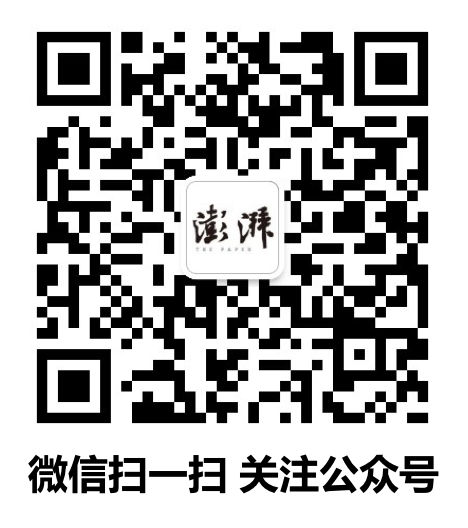- +1
Tangier Tech City project creates many opportunit…
原创 Hanane Thamik 中国投资参考

Macroeconomic Background of Tangier Tech City Project
In the past few years, Morocco has made the open economy the center of its foreign trade strategy, particularly by developing close relations with China. The connection between the two countries has expanded substantially in recent years, following King Mohammed VI's official visit to Beijing in 2016. Visa exemption for Chinese tourists, the kingdom's official participation in the BRI, the launch of direct flights between Casablanca and Beijing, or Mohammed VI Tangier Tech City's most recent initiative, are a testimony to these new relations. Efforts have escalated on numerous levels to deepen these ties. The Bank of Africa-BMCE Group has established a partnership with China-Africa Development Fund(CADF) with the objective of, among other things, promoting, enabling, and co-financing Chinese businesses, to set foot in Mohammed VI Tangier Tech. Morocco and China's trade ties are still strong, despite the setback caused by COVID-19's health crisis. The commercial relationship between the two countries is strengthening, and various new development opportunities are emerging, said Mr. Othman Benjelloun, Chairman and CEO of Bank of Africa, during the signing ceremony. China plays an important role in the Western Mediterranean's connectivity between Europe and Africa. Morocco has a position in the growing West Africa-Western Europe transportation systems corridor, which is centered around Morocco's al-Boraq high-speed rail system and the newly expanded Port of Tangier Med, the Mediterranean's biggest seaport, as well as the renovation and expansion of airports in the northern region of Morocco and the highways network towards the southernmost part of the country. Tangier Med's development was made possible through financial projects from the China Merchants Group. Chinese companies have built manufacturing facilities in Morocco to participate in the Europe–Africa trade chains generated by the al-Boraq railway line and the Tangier Med port. A $400 million plant was established by CITIC Dicastal to supply spare parts to the French Groupe PSA's automobile production division.
The Mohammed VI Tangier Tech City economic cluster is being built by China Communications Construction Company to boost business and trade between the two countries. Following the relaxation of visa requirements, Chinese tourism to Morocco has soared. Morocco is gradually asserting itself as a financial manufacturing center. According to Ravi Prasad, an expert who trains Chinese firms in financing overseas and follows up on China's goals at BRI, China makes full use of Morocco’s trade agreements with the US and Europe Morocco's geographical location is also a major draw. It is strategically close across the water from Spain and shares a shoreline with the Gibraltar Strait that links the Mediterranean Sea and the Atlantic Ocean. It has the potential to be an important gateway to both Africa and Europe. The digital city in Tangiers will have several commercial zones where businesses can manufacture products to carry across Africa and European marketplaces. The aeronautics production, vehicle industries, and a renewable technology region are all highlighted.
The origin and evolution of the Tangier Tech City Project Initiative
The BRI, China's ambition to expand commerce and promote economic growth by strengthening the connection between Asia, Africa, and Europe, is progressive including the construction of colossal infrastructures. The Mohammed VI Tangier Tech City, a collaborative plan of Moroccan and Chinese authorities, is one of the most recent projects in Africa.
However,the withdrawal of the project's key Chinese backer, Haite Group delayed the project's inauguration. Despite this, the project was reactivated in April 2019 during the BRI Forum in Beijing, when Moroccan Bank of Africa inked a deal with two additional large Chinese developers, the state-owned China Communications Construction Co (CCCC) and China Road and Bridge Cooperation (CRBC). The two countries finally reached a final agreement in November 2020, during a virtual bilateral meeting, granting Chinese firms 35 percent of the project's stake.
Tangier is a key player in the country's six-year Economic Growth Plan 2014-20, with the advancement of the so-called auto ecosystem – economically productive industrial groups – set to increase the region’s industrial contribution to Morocco's GDP from 14% in 2016 to 23% in 2020. Moroccan and Chinese enterprises signed a series of collaboration contracts related to the Mohammed VI Tangier Tech City.
“A new step has been taken in Sino-Moroccan cooperation, marking the effective start of the project of the Mohammed VI Tangier Tech City: A modern, futuristic, ecological industrial city … and symbol of Africa’s openness to the entire world,” a report from Bank of Africa stated.
The Role of Tangier Tech City in the development and growth of an economy
Tangier Tech City, a $10 billion technology and manufacturing center, is established on agricultural land in Ain Dalia, on the borders of Tangier, a city that has played a pivotal role in the country's development in recent decades. The novel 'Smart City' will certainly create special symbolic and tangible links between the African Continent and China due to its strategic geographic location at the crossroads of crowded shipping routes and just a few kilometers away from the Strait of Gibraltar that connects the Mediterranean Sea and the Atlantic Ocean. Chinese enterprises in the food, automotive, aerospace, renewable energy, and textile industries are scheduled to relocate to the new city.
Locals will have access to 90,000 job opportunities, with an additional 10,000 reserved for expats working in the new city, according to the inked public-private pact. According to Moulay Hafid Elalamy, former Morocco's minister of industry, commerce, finance, and digitalization, the smart city serves as a North African platform for Chinese automotive, aerospace, and textiles, and is a practical outcome of Morocco's efforts to diversify its industrial ties and financial sources. When the Sino-Moroccan flagship project secured its first substantial client, Chinese automobile maker BYD Auto, in December 2017, it gave the Sino-Moroccan flagship program a boost. King Mohammed VI and BYD CEO Wang Chuanfu signed a contract to establish four factories producing electric automobiles, cells, high-speed trains, buses, and trucks. The plants will employ 2500 people and produce 100,000 cars each year, bringing Morocco close to its aim of producing one million automobiles annually. The Tangiers Tech Development Company (TTDC) was founded by the local authority in the same month, to monitor the implementation and maintenance of the tech city project. The company, a public-private partnership between the district council and BMCE, has a share capital of Dh500 million (€46.3 million) and commenced operations in January 2018. More companies will join the Mohammed VI Tangiers Tech City project, as it gets traction. These businesses will manufacture products for African and European markets, taking gain from Morocco's free trade agreement with Europe and the US to avoid duties that would otherwise be levied on Chinese goods.
New Market and Infrastructure development opportunities in Tech city
According to Ilyas El Omari, governor of the Tangier-Tetouan-Al Hoceima Region, Tangier Tech City, with its monumental proportions of 2000 acres in total, will be created in stages over the next ten years. In 2019, work on the primary infrastructures that will reinforce the association between the Tech City and the Tangier Med Port has now begun. Though the city is anticipated to help the country's budget by drawing reserves from China and away, as well as creating more than 100,000 job opportunities, transferring advanced technologies, and training 6,000 people, it is also expected to have a positive impact on the environment. It will also bring in $300 million in tax income, as well as investment from 200 firms worldwide. Another key infrastructure is also ongoing comprising Morocco's earliest high-speed railway (TGV), which connects Tangiers and Casablanca (LGV). The TGV's first phase, of 200-kilometers connecting Tangiers and Kenitra, iwas inaugurated by the end of the first half of 2018, increasing passenger capacity on the national rail system by 7%- 8% yearly.
Some Issues to be aware of
Tangier Tech City's development boosts the country’s economic growth, which appears to be the primary goal for the time being; though, it remains to be seen what effects it creates on the ground and the environment, as well as how it integrates with the native cultural and psychosocial structures. This project symbolizes a port infrastructure redevelopment and provides Tangier with a one-of-a-kind tourist and cultural offer in Morocco. It's part of a slew of projects underway across the country aimed at modernizing Morocco and opening it up to the rest of the globe. The project must respect the city's history and culture while also creating a dynamic and livable environment for all. In addition, while ensuring the integration and development of the medina's historic neighborhood and tourist coast, the reconstruction of Tangier's port must consider the development of several poles: yachting, cruising, ferry passenger, fishing, hotels, cultural events, trade, entertainment, residences, and offices. Furthermore, it does not appear that the progress is the subject of public discussion or community contribution. As a result, whether it will lead to gentrification and displacement, potentially exacerbating existing inequities, or whether it would help the lower societal classes in northern Morocco, are concerned that remain unsolved for the time being. Despite the obvious advantages of smart cities, several challenges such as infrastructure issues, privacy and security concerns, and social integration stand in the way of urban digital transformation. Reforms that address Morocco's weak education system and opaque public sector are required to put the country on the path to long-term economic growth.
Editor | Li Yawen
Design | Demi

本文刊于《中国投资》2022年3月号
版权所有,侵权必究
欢迎个人分享,媒体转载请回复本微信号获得许可
《中国投资》杂志创办自1985年,由国家发改委主管,国家发改委投资研究所、中国国际工程咨询有限公司主办,是我国投资领域唯一的中央级刊物,业界最早专注于投资领域趋势报道的核心期刊。创刊三十多年以来,杂志以全球视角看中国投资,涵盖宏观经济、行业分析和企业投资案例,同时以全球市场为坐标,聚焦特定国家、地区和重大国际趋势,目前已经成为世界各国政府官员、各类投资机构、专家学者、企业家以及记者媒体的专业对话平台。
《中国投资》杂志每期覆盖包括上市公司在内的200多家央企国企和10000多家中国民营企业、1000多家中央与地方政府决策部门和机构、1000多家行业协会和商会、300多家主要金融机构等,是了解宏观经济环境、行业趋势前景和企业投资案例的重要参考。
China Investment, founded in 1985, is a monthly under the supervision of National Development and Reform Commission (NDRC) China’s macro-economic management agency, It’s jointly operated by Investment Research Institute under NDRC, China International Engineering Consulting Corporation. Enjoying an exclusive position under the central government, China Investment is the core journal which started the earliest among similar magazines to focus on the investment trend. Over the past 30-plus years, China Investment has been in line with theglobal market as its fundamental coordinate with a strategic focus on specific countries and regional markets and those major international propensities. China Investment is a key dialogue platform for officials from different countries, investment agencies, experts and scholars, business people and journalists.
原标题:《Tangier Tech City project creates many opportunities for Morocco》
本文为澎湃号作者或机构在澎湃新闻上传并发布,仅代表该作者或机构观点,不代表澎湃新闻的观点或立场,澎湃新闻仅提供信息发布平台。申请澎湃号请用电脑访问http://renzheng.thepaper.cn。





- 报料热线: 021-962866
- 报料邮箱: news@thepaper.cn
互联网新闻信息服务许可证:31120170006
增值电信业务经营许可证:沪B2-2017116
© 2014-2024 上海东方报业有限公司




